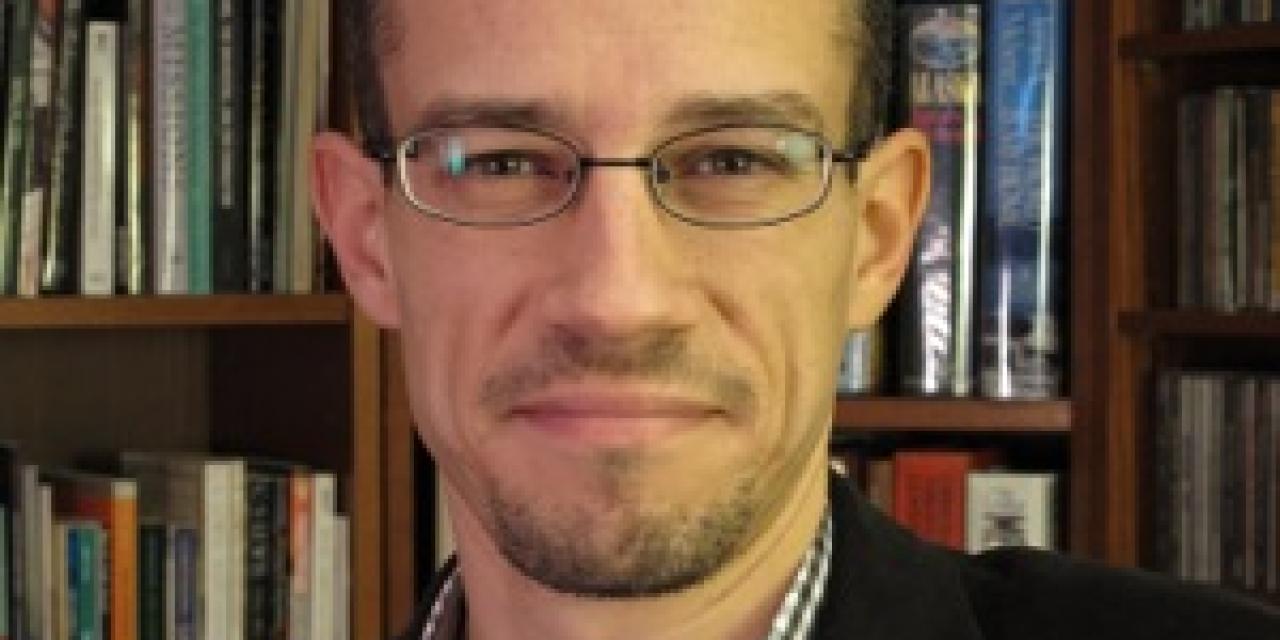Stephen Martin is director of the Music & Worship program at Azusa Pacific University (APU) in Azusa, Calif. He arranges, composes and directs music in churches and for film, symphonic orchestra, big band, vocal jazz and chamber groups. During APU’s Vital Worship grant project year, his students designed worship with older adults in mind. In this edited conversation, Stephen Martin shares what they learned about how carefully chosen songs can “wake up the mind.”
What was your Vital Worship grant about?
Our goal was to promote a reciprocal relationship between scholarship and service by incorporating congregation-based service-learning experiences into the worship curriculum. Students did projects with children, churches and older adults.
What did students do with older adults?
Students in my Music and Worship course partnered with Visiting Angels to design and lead worship in private homes. The Visiting Angels director and a staff member came to class to talk with students about possibilities for providing personal and unique worship. Visiting Angels gathered song and hymn requests from senior citizens and scheduled the worship times. About four or five students visited per home. As much as possible, they incorporated the requested music into worship that included Scripture and prayer.
How familiar were your students with the requested music?
This project challenged our students, in some cases, to learn songs or hymns that were completely unfamiliar. They needed extra research and preparation time to lead the song effectively. It’s fascinating to look at Hymnary.org timelines to see how particular hymns rise and fall over the decades.
What was the range of physical or cognitive disability among seniors whose homes your students visited?
Some were limited to the confines of their own bed. Others were quite mobile and able to get around the home with some assistance. Every visitation involved individuals who were mentally aware and able to contribute to the conversation and worship event.
What made these private worship times meaningful and reciprocal?
Counting students, one or two seniors per home and family members available to attend, the largest number per service would have been around eight to 10 people. Using individual song requests was meaningful for the seniors and for our students as they experienced emotional and spiritual responses to the requested songs. They saw how music can somehow “wake up” the mind, stirring memories from the past and invigorating the human spirit.
Some seniors were physically able to provide cookies or coffee after worship. Students consistently expressed how delighted they were to talk with seniors in their own homes. They affirmed the value of preparing for their particular service and learning the logistics of scheduling rehearsals, transporting music equipment and traveling to the home.
What else did you learn?
Through our contact with Visiting Angels, we learned of the documentary Alive Inside, which recounts real-life stories about how music has the potential to help us not only feel more alive but be more alive. The film shows how music is an entirely “other” sort of art form that can profoundly change mental processes, emotional connections and psychological awareness.
Have you done similar projects since your grant year ended?
Yes. Student groups from two courses—Music and Worship and Worship Leadership Formation—chose hymns to research for a worship service at Pilgrim Place. Pilgrim Place is a unique senior community in that it is for people who have served as ministers or professors or in charitable organizations. The students presented historical background on hymns that residents and students sang together.
Residents who attended could all get around physically, but some were dealing with early dementia and memory loss. Singing with them showed students that having memory issues does not mean you lack mental cognition. Science is showing us that music or movement synchronized with beats or musical pulse seems to help those who have experienced memory loss, stroke or other intellectual impairment.
What have you learned from these projects that churches can apply to planning worship with older adults or people with memory loss?
We learned that not all older adults respond strictly to hymns or older songs. Some respond to newer songs in pop, jazz or commercially driven styles. For others, music does nothing. They may be more responsive to visual art, film, drama, dance, dramatic reading of Scripture, or more tactile art forms such as sculpture.
In the future, we’d like to explore participating in worship with seniors through the eucharist, prayers of the people (interceding on behalf of seniors’ family and friends), presenting a dramatic story where the senior plays a role, or engaging in other creative art forms to weave a meaningful worship experience together.
Also, even though it’s helpful for churches to share their worship services through recordings or online, physically being in the room with someone changes everything. When the elderly feel a hand on their shoulder, see a caring face and enjoy a warm smile, it can make a world of difference.
Finally, there’s a difference between creating music therapy-oriented worship and corporate, intergenerational, God-first worship. One is centered around the individual (and naturally so) while the other is centered around a group of believers sharing in common faith together. Certainly corporate worship can have or contain therapeutic aspects. But our first priority in corporate worship is to invite people toward the invisible substance of God, allowing healthy byproducts to take place as they will.
LEARN MORE
Stephen Martin recommends reading this Scientific American article about how music can heal the brain. “This heightens worship planners’ responsibility to understand how music can reawaken the mind and body or reorient our imagination toward our Creator, as James K.A. Smith suggests in Desiring the Kingdom.”

